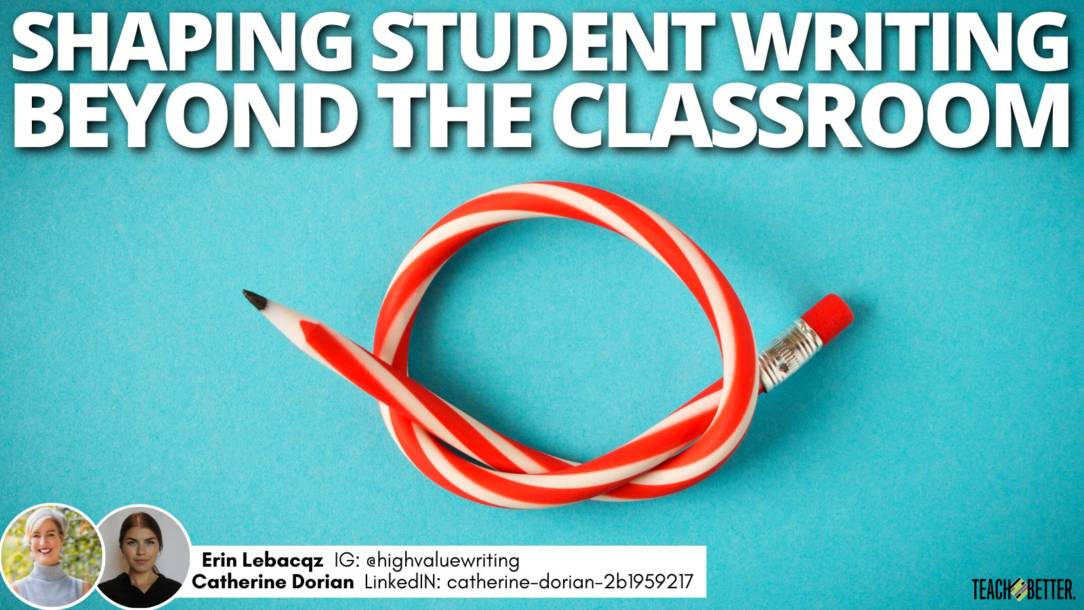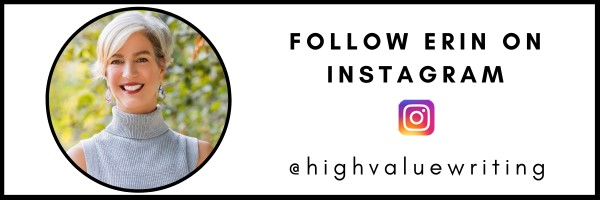TL;DR:
- Students primarily write for teachers in academic settings, but they also engage in real-world writing.
- Teaching audience awareness helps students understand their readers and write more effectively.
- Using a reader profile fosters a shift from self-centered writing to audience-oriented writing in various genres.
Audience Awareness: Teaching your students to think about the reader behind their writing.
When it comes to writing, more often than not students look to their teachers for validation. When we assign a literary analysis of Paradise Lost or an argumentative essay about the role of the First Amendment in the Era of Twitter (now called X), we are, more often than not, the only reader of consequence. We write feedback in the comments on Google Docs. We circle the corresponding boxes on a rubric or checklist. Then we input their score in the gradebook, then move on to the next unit.
From the student’s point of view, they’ve shown us—their only reader—what they know, and we’ve acted as the principal judge of their work.
But what about all of the writing students do that isn’t for teachers? Emails, texts, tweets, Snapchat stories, Instagram captions, the scripts for their Instagram reels or TikToks. These are all ways that students write every day—outside of school, and for more “real-world” audiences.
These genres of writing—like other “real-world” applications of writing—all have one thing in common: to do them well requires a solid understanding of one’s desired audience.
By cultivating audience awareness, students are better able to see purpose in their non-academic writing and to see how their academic writing may adapt to the genres outside of the classroom. Click To TweetWhy help students think about their readers?
When we write with audience awareness, we think about the person on the other end of our writing—our reader. We ask ourselves: who will read our email, our tweet, our text, our caption, our grant proposal? What will that person want from our communication? And how will they feel after reading it—informed, curious, delighted, enlightened, enticed, surprised, pleased?
Audience awareness is the first step to helping students write more thoughtfully, strategically, and effectively. By cultivating audience awareness, students are better able to see purpose in their non-academic writing and to see how their academic writing may adapt to the genres outside of the classroom.
Thinking about Readers Means Recognizing Ourselves as Readers Too
Our students read and digest content daily, but they may not recognize themselves as readers, or as an “audience.” To help students begin to understand audience awareness, we can start by helping our students see themselves as readers of many genres and mediums. Once students see themselves as complex “audiences,” they can start to understand how to write with intention for other audiences.
If your students are new to seeing themselves as readers, consider asking questions like:
- Who are they following on Instagram and TikTok? What reels are they watching? Why are they watching them? Which influencers capture and sustain their attention? Why?
- What podcasts are they listening to? Why are they listening to them?
- Which headlines in the news capture their attention?
- Have them look at their YouTube history. Whose videos do they love watching? Why?
- What kind of texter are they? Long texter? Short texter? Rapid texter? What kind of texts do they appreciate receiving from friends?
- Are they writing on any communities on Reddit? Are they turning to Reddit as a learning resource or to connect with others?
- How do they react to emails from teachers, school administrators, coaches, etc.? What sorts of content do they hope to find in an email?
- Do they read directions on assignments? Why or why not? Or, when do they read directions?
- Do they drive? Have they ever had a problem with their car and had to read the manual?
- What sorts of series are they watching? Do they binge-watch? What makes something binge-worthy?
The Reader Profile—Download the Handout!
After you engage your students in a discussion about who they are as readers, we recommend asking them to profile their reader selves. A reader profile asks students about their reading—a first step towards developing an understanding of others as readers. We’ve made a reader profile that you can download here.
The reader profile handout walks students through a series of exercises, designed to get them thinking about the content that they consume and why.
- Which genres they read and how genres differ in general.
- Their purpose in reading—what needs or interests do their reading material align with?
- Their preferred manner of consumption—on their phone, in print, etc.
- Likes and dislikes they may have as an audience.
Using the Reader Profile
How you use the Reader Profile depends entirely on the amount of time you can devote to teaching students about audience awareness. Even just asking students to fill out the Reader Profile and discussing their results with their classmates will initiate a new way of seeing writing; thinking about who they are as readers will make them more mindful about how they write in different genres and for whom.
If you have a little more time, though—or if you’re left with a week or two between units or before a break—use the Reader Profile as a springboard for an instructive activity or mini-project.
Here are some of our ideas:
- Ask students to create a work of writing—a blog post, a script for a YouTube video, TikTok, or Instagram reel, a series of Tweets, an instruction manual, whatever, really—about a topic they’d like to learn about. Require that they use at least three of the techniques that they listed as preferences on their Reader Profile.
- Have students switch their Reader Profile with someone in class. Then, challenge them to create a work of writing that will engage their partner, based on their partner’s answers on the Reader Profile. Have them switch rough drafts with their partners, and allow their partners to critique them.
- Ask students to look at a page of one of their textbooks. Then, have them rewrite (or recreate a new genre) of that page, based on their own Reader Profile.
- Have students rewrite or recreate a page of a textbook for a classmate based on their Reader Profile.
- Have students create a Reader Profile based on a fictional character. Then, have them challenge each other to create a work of writing that will most likely engage this fictional character. Then, vote as a class on the work of writing that will most likely sustain this fictional character’s attention and achieve the writing’s desired purpose.
The Paradigm Shift
Even if your students are still developing the skill of writing and speaking with their audience in mind, they have, at this point, at least begun to make the paradigm shift between writing for themselves and writing for an audience.
Whether or not you’re able to make this activity into an entire unit, consider how you can take the ideas of audience awareness into your classroom throughout the year. The next time your students are writing an essay, ask them to consider a particular person as their “ideal reader.” Consider pairing that essay with some kind of multimedia—if your students are writing an argumentative essay, have them pair it with an advertising kit. Use emails or headlines as teachable moments to discuss audience awareness.
Interested in learning more about the reader profile? Check out our YouTube video here. Curious about writing in for business or leadership? Check out High Value Writing!
About Catherine Dorian
Catherine has taught English in public and private secondary schools for over seven years. Through writing and experience, she explores the challenge and dynamic nature of teaching in the Harkness model, thinking of new ways to teach writing, and developing students’ multimedia literacy in the digital world. Catherine loves teaching for the same reason that she loves writing; both require that we constantly dispute our ideas, question possibilities, seek connection, and find creative ways to navigate our most pressing obstacles. Catherine holds a BA in English Teaching from Montana State University and an ALM in Extension Studies, Creative Writing and Literature from Harvard University. She lives and teaches in central Massachusetts.
About Erin Lebacqz
Erin Lebacqz helps you write with clarity, confidence, and emotional intelligence. Erin’s curriculum and book, High-Value Writing, capture Erin’s 25 years of experience working with business and academic writers around the world. Erin’s interactive writing workshops and presentations engage learners in purposeful discussions that respect their desire for intellectual growth while also providing practical strategies learners can immediately apply in the workplace.
Erin has trained and taught in the United States and Asia, in the finance, manufacturing and trades, non-profit, higher education, healthcare, and public sectors. She holds a BA in International Relations, an MA in Professional Writing, and various teaching certificates.





